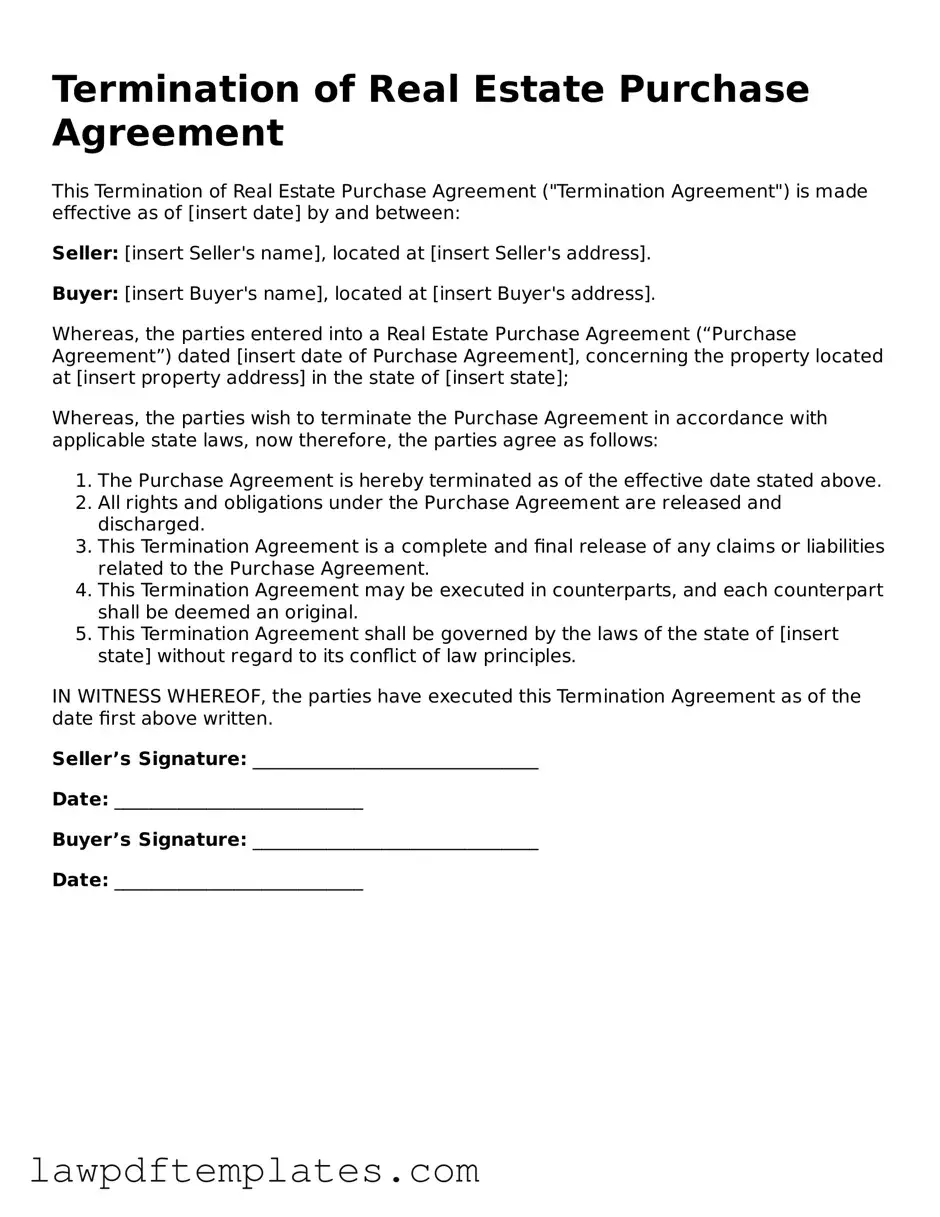Termination of Real Estate Purchase Agreement
This Termination of Real Estate Purchase Agreement ("Termination Agreement") is made effective as of [insert date] by and between:
Seller: [insert Seller's name], located at [insert Seller's address].
Buyer: [insert Buyer's name], located at [insert Buyer's address].
Whereas, the parties entered into a Real Estate Purchase Agreement (“Purchase Agreement”) dated [insert date of Purchase Agreement], concerning the property located at [insert property address] in the state of [insert state];
Whereas, the parties wish to terminate the Purchase Agreement in accordance with applicable state laws, now therefore, the parties agree as follows:
- The Purchase Agreement is hereby terminated as of the effective date stated above.
- All rights and obligations under the Purchase Agreement are released and discharged.
- This Termination Agreement is a complete and final release of any claims or liabilities related to the Purchase Agreement.
- This Termination Agreement may be executed in counterparts, and each counterpart shall be deemed an original.
- This Termination Agreement shall be governed by the laws of the state of [insert state] without regard to its conflict of law principles.
IN WITNESS WHEREOF, the parties have executed this Termination Agreement as of the date first above written.
Seller’s Signature: _______________________________
Date: ___________________________
Buyer’s Signature: _______________________________
Date: ___________________________
